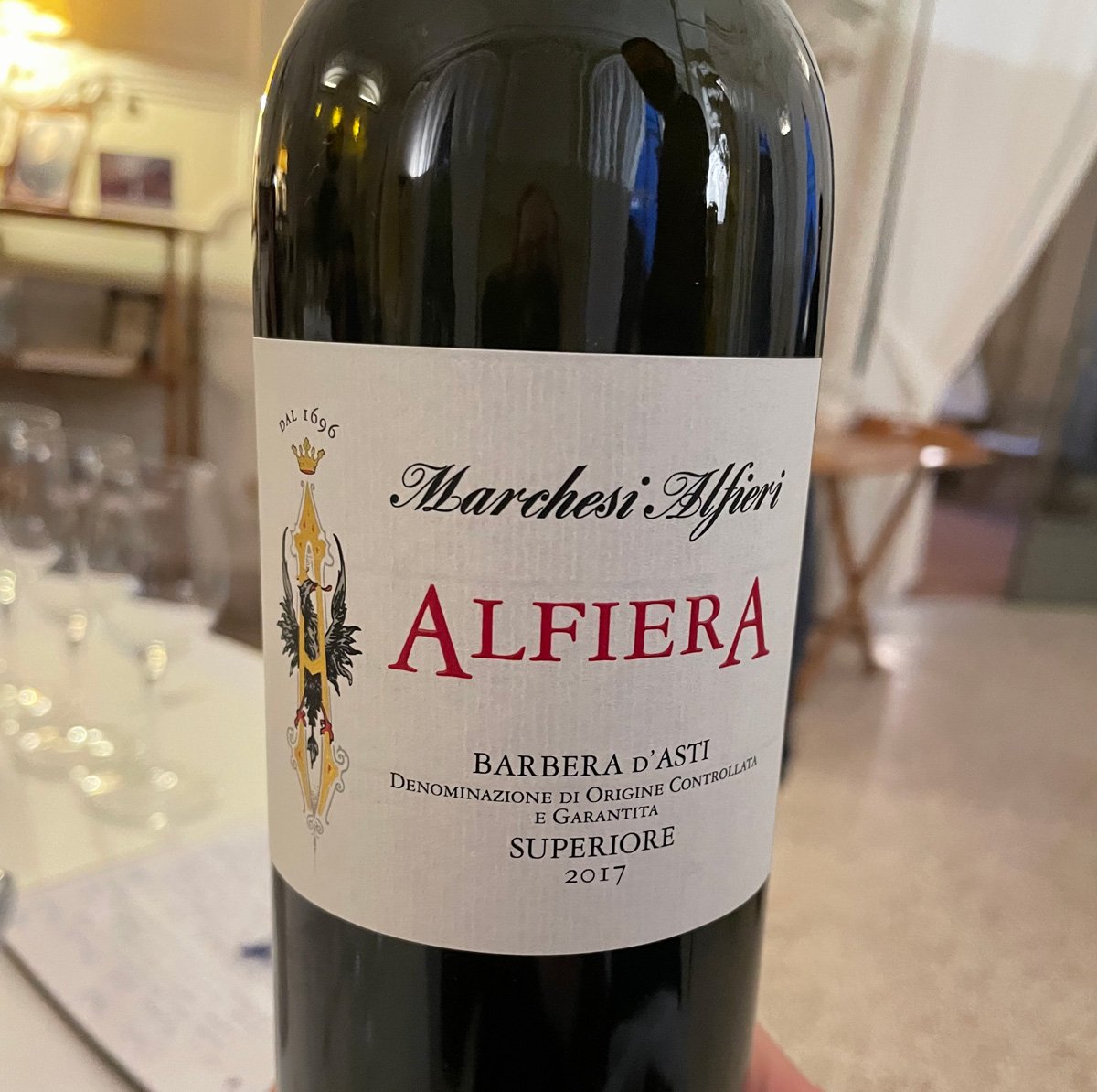The Magnificence of Marchesi Alfieri
/The Alfieri castle, first built in 1696. All photos © Patricia Thomson
[If you have problems seeing photos on Chrome, try the Firefox browser.]
Of all the wineries I visited on my barbera press trip this month, I was most psyched about going to Marchesi Alfieri. I’d already experienced the magnificent splendor of this place in the early aughts when taking clients of my company La Dolce Vita Wine Tours.
In the town of Asti, one sees the Alfieri name everywhere, especially that of Count Vittorio Alfieri (1749–1803), a dramatist who gained fame founding a new school of Italian tragedy. There are Vittorio Alfieri statues everywhere, a piazza named after him, and his childhood palazzo is now a museum.
In 1619, Alfieri’s ancestors gained title to the fiefdom where the winery now sits. The town itself bears the name San Martino Alfieri. But the winery’s official start was 1696, when the castle, cellar, and surrounding park were built.
Mario Olivero, winemaker at Marchesi Alfieri since 1999
A historical footnote that I find interesting: Camillo Benso Cavour, one of the ‘inventors’ of Barolo wine, had a niece who married into the Alfieri family. As a wedding present, the couple was gifted a small parcel of pinot noir on this property. Remember, Count Cavour had dry, age-worthy Burgundy in mind as his model for Barolo and first tried to recreate that in Piedmont with pinot noir grapes. I remember hearing that he planted his cuttings (imported from France, of course) on this very estate. It’s still grown here.
I also remember meeting Marchesi Alfieri’s enologist, Mario Olivero (here since 1999), just after he’d returned from his first trip to Oregon where he tasted lots of pinot; he realized his needed improvement. We didn’t get to taste it on this recent visit, since it’s made only in ideal vintages, so I can’t speak to what Olivero has done with two more decades of experience with pinot under his belt. But he is using it now in a Blanc de Noir Brut, which was very good indeed.
The winery is still in family hands, run by direct descendants. Heading it are three elderly sisters with titles: Donna Giovanna (below), Contessa Emanuela, and Contessa Antonella San Martino di San Germano. One is married to a gentleman I met, Maximilian Hausendorf (if I got the name right). While he and I were standing in the grand staircase filled with portraits of ancestors, he pointed out a painting of Vittorio Alfieri himself, gesturing towards the ‘new’ port of Nice, France, then part of the Kingdom of Piedmont. I told him I felt like I was in a Harry Potter film, where the paintings might come alive and perhaps ask for a password. A genial fellow, he (fortunately) laughed.
Family photos in the tasting room
Giovanna San Martino di San Germano in 2002, one of 3 sisters who runs the show
We toured the castle, including a grand ballroom with witty trompe l’oeil paintings; a dining room done à la mode with Japanese paper rolls; a downstairs kitchen with everything an 18th century cook could want; and an orangerie for the family’s potted lemon trees, built by Benedetto Alfieri, Vittorio’s cousin, who was also architect to the royal Savoy family. This being a wine tour, we also visited their historic cellars, which are still in use.
The grand ballroom
200-year-old Japanese paper scrolls decorate the dining room
In the ballroom, the door on the left is real, while the open door on the right is trompe l’oeil fakery
The orangerie, designed by Benedetto Alfieri, architect to the Savoy royal family
The grand stairwell with Vittorio Alfieri gesturing towards the ‘new’ port of Nice.
And finally, the wine. Altogether they make up to 150,000 bottles from four grapes with seven labels. During our earlier seminars, we’d tasted their Barbera d’Asti La Tota, which comes from several different parcels. This is a barbera I’ve always liked, as did our wine-tour clients, who tasted it at meals if not the winery itself. It was always a big hit. Barbera behaves very nicely with a touch of oak, and this ages for one year in second- or third-pass barrique and tonneaux, so it’s a light touch, just enough to add some spice and vanilla to the ripe plum flavors.
At our sit-down tasting, they served us two vertical flights. The first was their flagship Barbera d’Asti Superiore Alfiera, coming from a single vineyard close to the castle. Here we’re talking old vines, or partly. The oldest date from 1937, but over two-thirds were replanted in the past 20 years. Still, the concentration of fruit bespeaks vine age. That’s married with 15 months in barrique. Delicious.
The second flight was Costa Quaglia Terre Alfieri. Terre Alfieri is Piedmont’s newest DOCG, established in 2020. It pertains to both reds (nebbiolo) and whites (arneis). It can come from 11 townships in the area where the Langhe, Roero, and Monferrato converge, and it’s the only DOCG to straddle two provinces: Asti and Cuneo. (“That’s sure to be a pop-quiz question somewhere,” whispered one of my fellow journalists.) This nebbiolo has the gentler personality of a Roero (the DOCG zones abut), rather than the fierce tannins of Barolo. Olivero said he likes his nebbiolo to be ready to drink immediately, then could age further. He hit the target with this wine.
A corner of the orangerie at dusk















